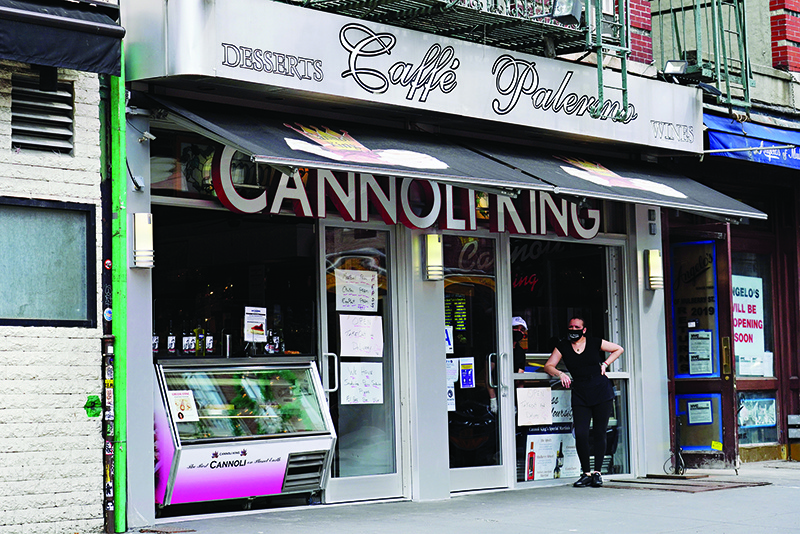
WASHINTON: As the coronavirus worked its way across the United States, it cleaved the country’s workforce in two: those who have the ability to work from home, and those who do not. From baristas to hotel workers to tourism operators, people whose job requires them to show up in-person were among the hardest hit in the waves of layoffs, and also those on the low end of the US pay scale.
Unemployment is now at a level not seen in since the Great Depression nearly a century ago, and moving higher, while the coronavirus is expected to threaten the country for months to come, factors analysts fear will only serve to deepen inequality for workers in the world’s largest economy. “People who are well-off and highly skilled and work from home are going to demand that their employers make accommodations for them,” said Jesse Rothstein, a former chief economist at the Labor Department who now teaches at the University of California, Berkeley.
But “lower skilled workers… are taking on more risk without more pay.”
Federal Reserve Chair Jerome Powell has described the pandemic as “a great increaser of inequality,” but experts say that is not inevitable, particularly if Congress passes new stimulus measures to support battered businesses and consumers.
“Every single cleavage we had before is widening,” said Claudia Sahm, a former principal economist with the Federal Reserve who is now with the Washington Center for Economic Growth. “We have an opportunity to do something better than what we were doing before, but it will not just happen. It has to be a policy effort.”
An unequal recession
When the coronavirus arrived, the US economy had a tight labor market, with an unemployment rate near a historic low of 3.5 percent in February, while long-stagnant wages were just starting to rise. Yet the job market was not as healthy as it appeared.
The US Private Sector Job Quality Index (JQI) -- which uses government employment statistics to gauge the balance between non-supervisory jobs with decent pay and those without—has been charting downwards for years. In February, the JQI was back near its all-time low reached in March 2012 as many of the jobs being created paid below the mean weekly wage, according to the index compiled by a consortium of academics and researchers.
And a study late last year from the Brookings Institution found 44 percent of US workers qualify as “low wage,” with median annual earnings of just $18,000 a year.
When the pandemic hit and sent the unemployment rate to 14.7 in April and the economy into an almost-certain recession, low-paid workers in industries like leisure, hospitality and food services were laid off in such large numbers their absence skewed average wages upwards.
While government data show most consider their layoffs to be temporary, Michael Weber, an associate professor at the University of Chicago Booth School of Business, warned that if businesses close or scale back staffing, job seekers will be forced to compete against each other, driving wages lower, as is typical in recession job markets.
Who’s hiring? Grocery store chain Kroger, e-commerce giant Amazon and several fast food companies have announced massive hirings since the pandemic hit, but offer no safe haven. “Those are the very jobs that are under criticism over the last few years given that they pay unreasonably low wages,” Weber said. And those type of jobs “come hand-in-hand with more precarious income situation.”
Robert Hockett, a law professor at Cornell University who is a principal researcher on the JQI, said job seekers could demand risk premiums at workplaces where they face exposure to the coronavirus, or take equity stakes in struggling companies to help keep them afloat. In fact, the Fed reported this week that Boston area employers were giving workers temporary pay increases of up to 30 percent, in part to compensate for the increased risk and hold onto their employees.
But unemployed workers could end up forced to accept whatever jobs they can find, particularly if Congress fails to extend the small business loans and unemployment benefits temporarily expanded in the $2.2 trillion CARES Act approved in March.
“We’re kind of on a tightrope or a knife’s edge at this moment,” Hockett said in an interview. President Donald Trump’s administration has been lukewarm towards further spending on aid for workers, predicting the coronavirus will be defeated and a strong economic rebound starting in July, even as many economists remain skeptical of a rapid, V-shaped recovery.
“It’s all going to ride on how desperate workers are,” Hockett said, “And that’s going to ride on public policy positions.” – AFP
.jpg)



